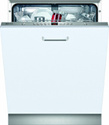Refrigeration Guides, Help & Advice
Refrigeration Guides, Help and Advice
This page contains some Frequently Asked Questions on refrigeration. If you have any questions simply contact us with your query.
What type of fridge freezers or fridges are there?
As a general rule they will fall loosely into 8 major categories:
- Fridge-freezers
- American or Continental style refrigeration with units wider than 60cm
- Tall larder fridge units (no icebox)
- Tall freezers
- Under-counter/worktop fridges (short refrigerators) that will have a small freezer (icebox) compartment inside
- Under-counter/worktop larder fridges that do not have an icebox
- Under-counter/worktop freezers
- Built-in larder fridges, refrigerators, freezers and fridge-freezers<
How will I know which fridge suits my needs?
- Space available for the appliance: height x width and sometimes depth
- Manufacturer reputation
- Accessories: ice maker, drink dispenser, TV/Internet or coffee machine!
- Frost-free freezer compartments
- Twin compressor if a fridge-freezer
- Colour
- Energy rating
What fridge size can you accommodate? A lot of older style homes may have only allowed for a 50cm wide unit, so always measure the space dimensions before choosing. Your choice may be dictated by this one factor alone.
Price is always a factor and this will be based on which manufacturer you choose along with fridge quality, size and features. We advise you make a list of must have features and then use our website to search for products with them.
Frost-free is a term that often causes confusion. It actually refers only to the freezer compartment of the appliance. You will therefore not get a frost or ice build-up in these. A frost-free freezer operates by circulating cold air around the compartment thus excess moisture is removed from the air. A standard freezer will just freeze the whole compartment, often freezing warm air that has entered when the door was open and this will appear over time as ice (which is when the freezer requires defrosting).
What are twin compressor fridges?
Twin compressor fridge-freezers, mostly side by side styles, allow for each section to have its own separate cooling system and motor unit. This allows for accurate temperature control in each section and, in the event of a breakdown, all food is not lost as one section can continue to work.
What does 50/50 or 60/40 mean?
Ratios simply refer to the size of the door on the fridge and freezer compartment eg: 50/50 would be a fridge freezer equally divided, 60/40 means the fridge door is taller than the freezer door. These ratios do not directly relate to the capacity of the fridge or freezer section. In our 50/50 example, the larder section will have a greater net capacity than the freezer. This is because the freezer has thicker insulation and also loses some space due to the location of the compressor in the base.
Manufacturers will quote the volume of each compartment in either litres (more common on EU products) or cubic feet (cu. ft). A rough method to convert from litres is to divide by 28. This will give you an approximate cubic footage. Be aware that manufacturers will further confuse the issue by quoting Gross and/or Net capacities. Gross is what you get with the shelves/baskets removed. Net is what you really have to play with.
What colour fridges are available?
Colours go in and out of fashion. White, which is not a colour, remains constant. Forty-odd years ago, cream was a popular colour for fridges, but try to get cream today! Some manufacturers do offer a range of colours - some rather exotic - check out Smeg and Baumatic. However, white is still the most popular, followed by silver. Stainless steel is more of a finish than a colour and these models are often much more expensive due to the nature of the materials used to build them. Black, also not a colour, is now the new look for the fashion conscious and will command a premium price due to its limited market.
Built-in products are little different to their freestanding counterparts. The important thing to remember is: dimensions, dimensions, dimensions! Your new or replacement appliance needs to fit into the cabinet space available and take the correct sized door. Bear this in mind when searching for the product your require.
Where can I situate the fridge or freezer?
Fridges and freezers operate on the basis that the air surrounding the appliance must be warmer than the air inside the appliance for them to work. Consequently, if you locate a fridge or fridge-freezer in an unheated location such as a shed or garage, then come winter the air in this location could be colder (under 3 degrees C) than the operating temperature of the fridge - result: disaster. The only appliance that will successfully work in an outbuilding is a freezer. These operate at between -15 and -20 degrees Celsius. Just pray that we don't have a winter like 1982 when the temperature one January night in middle England fell to -26 degrees, colder than the inside of your freezer!
What are fridge energy ratings?
In general, most new fridges are A or A+. This is derived from a set formula on energy use, cooling efficiency and so on. You may find this somewhat confusing at times, but as a rule A+ is better than A by a few pennies per week, A is better than B and so on...
One factor to look out for is how long a freezer will keep your goods frozen in the event of a power failure. The higher figure, the better the insulation and therefore the lower the running costs in the summer months.





















